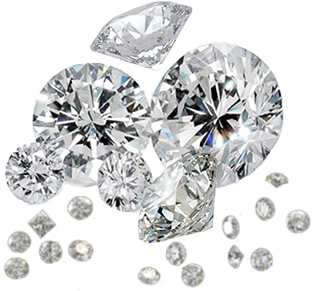Diamonds

Tulsa Gold & Gems pays you the MOST cash for diamonds and gold jewelry. Find out what types of diamonds we buy below:
What types of diamonds do you buy?
We purchase any sized diamond. If your diamond is GIA certified, please bring your certification with you when we evaluate your diamond. All diamonds will be evaluated by a certified gemologist and a value will be determined based on clarity, color, cut, and carat weight.
Diamond Certification
A diamond that has been certified is the only assurance a consumer has that they are buying a quality diamond. There are several gemological laboratories that certify diamonds with the most recognized being:
G.I.A. – Gemological Institute Of America
A.G.S. – American Gem Society
E.G.L. – European Gemological Laboratory
I.G.I. – International Gemological Institute
It is important to note that diamond gradings between the different gemological laboratories are not always consistent. Since the grading of color and clarity is based upon subjective judgment, different grades can be given to diamonds that are borderline between two grades.
Color
Color is measured on a scale from colorless to shades of color with colorless being the rarest and most expensive. The Gemological Institute of America (GIA) uses a color grading scale of D-Z, colorless to shades of color respectively. As mentioned above, diamonds come in different colors, and anything outside this color scale is referred to as “Fancy Colors”. The rarest and most expensive diamonds are considered Fancy Colors, which include: red, pink, blue, and green.
Cut
Different diamond cuts have been developed to best utilize a diamond’s material properties. The cut of a diamond creates a somewhat symmetrical arrangement of facets that modifies the shape and appearance of the diamond. Several cuts have been used when shaping and polishing a diamond with the most common being:








Clarity
- F1 Flawless – no inclusions or blemishes within view under 10X magnification
- IF Internally Flawless – no inclusions but minor blemishes when viewed under 10X magnification
- VVS1 & VVS2 Very Very Slightly Included – minute inclusions difficult to view under 10X magnification
- VS1 & VS2 Very Slightly Included – minute inclusions commonly crystals, clouds or feathers when viewed under 10X magnification
- SI1 & SI2 Slightly Included – inclusions are contained, such as crystals, clouds, knots, cavities, clea age and feathers when viewed under 10X magnification
- I1 – I3 Included – inclusions such as large crystals or large feathers viewed under 10X magnification and may affect the transparency and brilliance without magnification







